This is a story of how I tamed the ultra-wide Nikkor 20mm f/3.5 – a remarkable lens that has become a key part of my style as a photographer.
Back in the early nineties, I studied Photography as a subject at the university in Lisbon. I joyfully remember those days, shooting eagerly with my brother’s borrowed Olympus OM-2N. At the same time, I was thrilled with the whole process of developing, enlarging and printing. There was an inviting strangeness, some magical aura in the quietude of the darkroom where I came to spend a great deal of time.
However, in the years that followed I became a professional photo retoucher at a design company and a freelance illustrator, thus dedicating all my creative energy to those areas of work. Consequently, my early avidness to photograph somehow faded away. There followed a huge hiatus where I almost didn’t touch a camera. Nevertheless, my core interest in Photography never vanished, not only I was attentive to exhibitions and photo books, I was also captivated by a certain image of the photographer way of life: the fearless allure and humanism of Don McCullin, Lee Miller or James Nachtwey; the night strollers, witnesses of the underground and late-night bohemians like Anders Petersen, Christer Strömholm or Daidō Moriyama; the glamorous, seductive appeal of the fashion photographer Helmut Newton, or the Swingin’ Londoners Brian Duffy and David Bailey (along with the unnamed photographer played by David Hemmings in Michelangelo Antonioni’s Blow Up, that is said to be inspired by the latter); Robert Frank, Lee Friedlander and William Eggleston wandering through hidden places into the endless landscape of America.
All those extraordinary characters were utterly inspirational, a mythified projection of my pursued idea of freedom. I envisaged a get away from the tedious soul-sucking office lifestyle, a chance to become simultaneously unbound and creative.
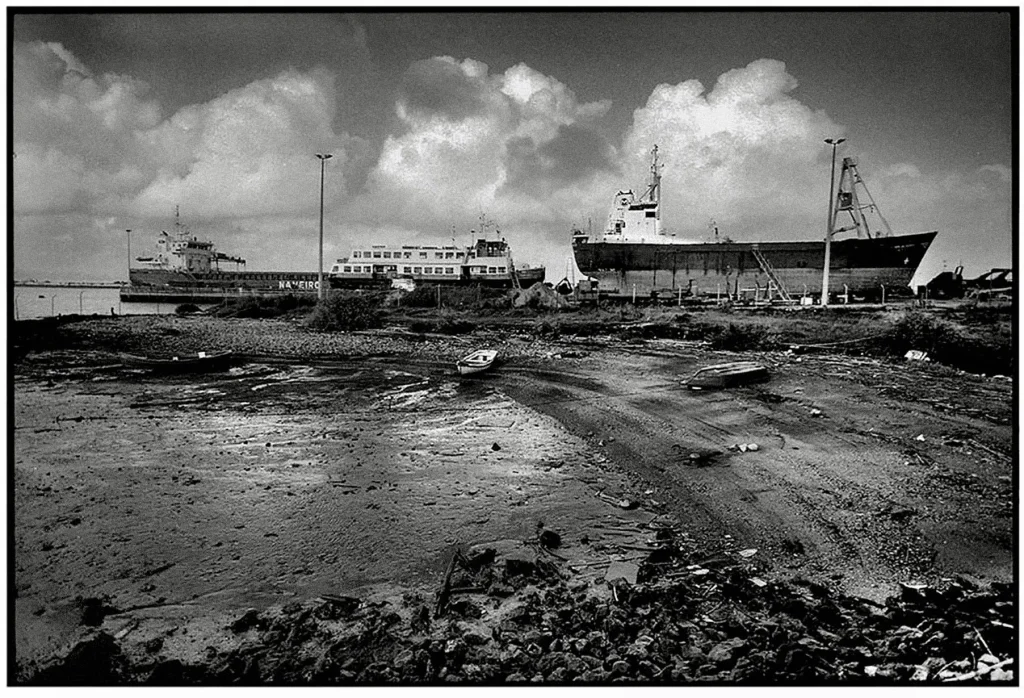
(Range) Findings at the Market
While living in Lisbon, I was a regular at Feira da Ladra (the main flea market) a great place and a must-visit where one can often find a vast choice of used film cameras. There, one day in 2011, I spotted some Japanese rangefinder cameras so cheap that I immediately bought one, a Canon Canonet (first model). I couldn’t have realised then that in a space of just one year, three more cameras would be added to the shelf: a twin sibling Canonet; a Konica Auto S2 and an Agfa Billy One. So let’s say that the old passion was back.
As I was by then just freelancing, I dedicated all my spare time using the new tools, but achieving the results I was expecting would not be an easy task. I had to struggle with the usual issues of old film cameras, like inaccurate and obsolete selenium light meters, faulty or sticky leaf shutters, light leaks, jammed film (oops, my fault…) and misaligned rangefinders. In consequence, I ended up spending more money to fix them than what I have paid in the beginning. For a year or so, I used mainly and extensively the Konica Auto S2, a very nice camera with surprisingly great lens, I was quite happy with the photos, and its 45mm (f/1.8) focal length turned up to be the perfect way to discipline myself before deciding to try a wider angle. Mostly, my shots were random, classic street scenes or friends and family portraits. I hadn’t at the time any particular project in mind.
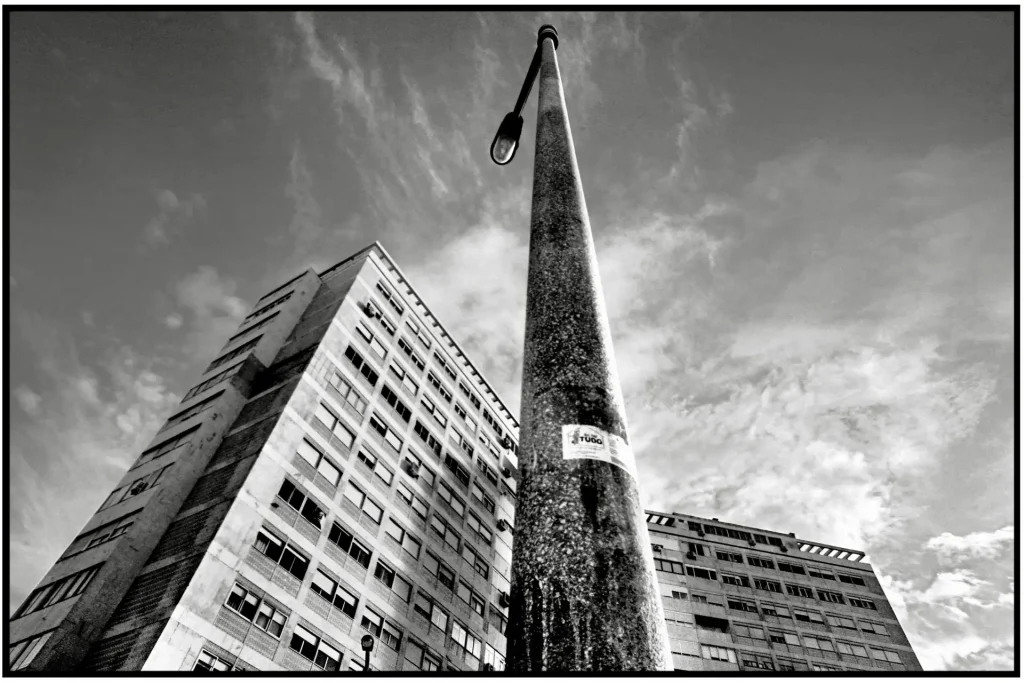
Nikon & Nikkor
The need to acquire more cameras persisted, although I don’t consider myself a compulsive collector as I actually use them, always being curious about their particularities and keen on exploring new results while trying different gear. It was time to move to the classic SLRs with interchangeable lens, so I bought a Nikkormat FTn, and just in a couple of months later, I got the classic Nikon F (Photomic) and the more advanced and most desired Nikon F5.
I had then three Nikkor lenses: the plain and lovely 50mm f/1.8 (AI) which came attached to the Nikkormat; the all-round, solid AF 35-70 f/2.8D; and the classic H Auto 28mm f/3.5 (non-AI), an exquisite lens, but my cheap second-hand copy was truly a wreck, ugly and scratched, with a colony of fungus spreading all over.
Anyway, I somehow enjoyed the rendering the 28mm provided, even filtered by a lousy fuzz, and started to seek for a decent one, or similar, wider than 35mm for optimal results. As I couldn’t find any at my regular second-hand camera shop, not even a 24mm, the owner, a very good seller (and quite a character!) promptly proposed me instead, a ‘rare and unique lens’, and for an irrefutable price, I took home the Nikkor 20mm f/3.5 (AI).
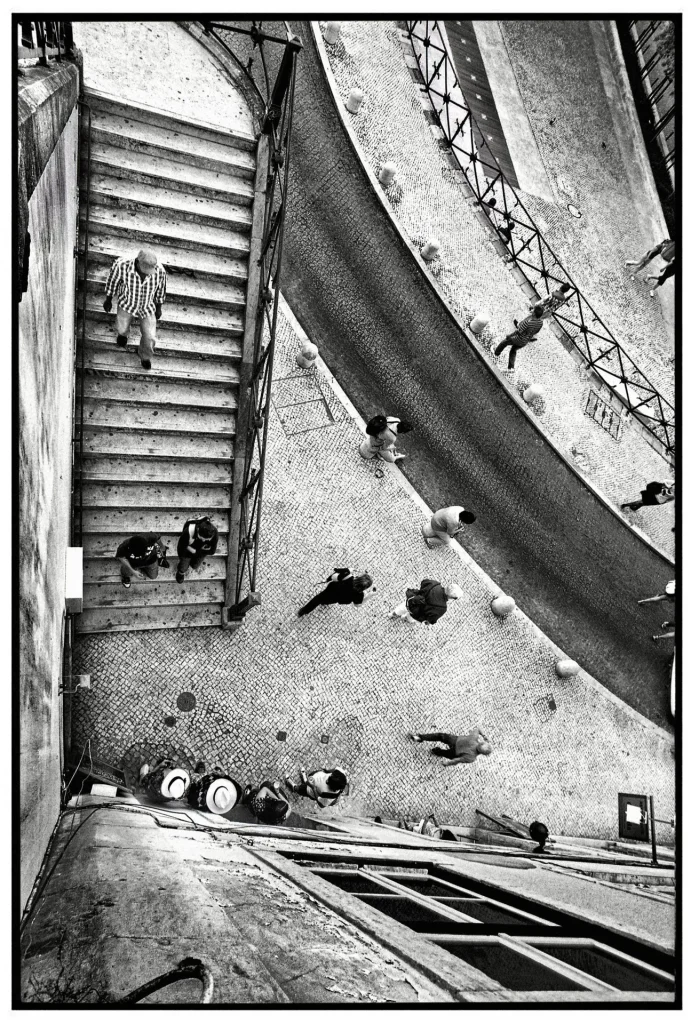
Taming the Ultra-Wide
My first impressions while using my new Nikkor 20mm f/3.5 on the streets were quite good. I loved to play around with the striking ultra-wide angle, it was so easy to keep everything in focus, unlike with the 45 or 50mm that I was used to. So, it wasn’t without dismay that some time later, after having some rolls of Kodak Tri-X and T-Max developed, I looked at the photos. Although I loved the landscape views and architectural perspectives, it felt like, in those shots where I got closer to the subjects, everything and everybody were being pushed out to the borders of the picture in a dreadful way, particularly with people, who displayed distorted bodies and unflattering, cartoonish faces.
Surely the optical quality of this 20mm was in line with the great classic Nikkor lens, so I didn’t give up, and as I went on using it, I realised that this is an outstanding lens, and, as with ultra-wide angles in general, it just needed to be tamed. It is not uncommon in the beginning to be distracted and blown away by its effects, impatiently pressing the shutter without thinking or not composing properly, thus producing mainly annoying, amateurish images, based merely on the effect itself.
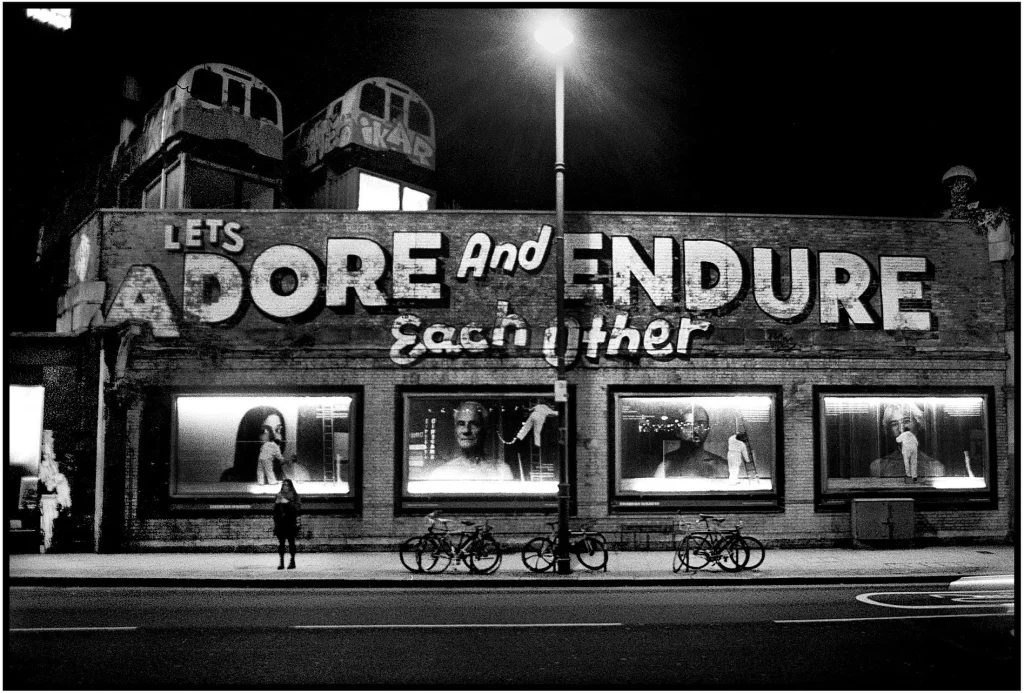
Standing up and walking on roller skates implies that we find the right stance and balance to avoid toppling over. Something similar happens with this lens. I find it crucial taking some time to obtain a certain balance on the image and the subjects that we want to frame. This is because moving the camera just a little can completely change the plan or the perspective, and due to the broad visual angle, unintentionally emphasize something we may find irrelevant for the picture.
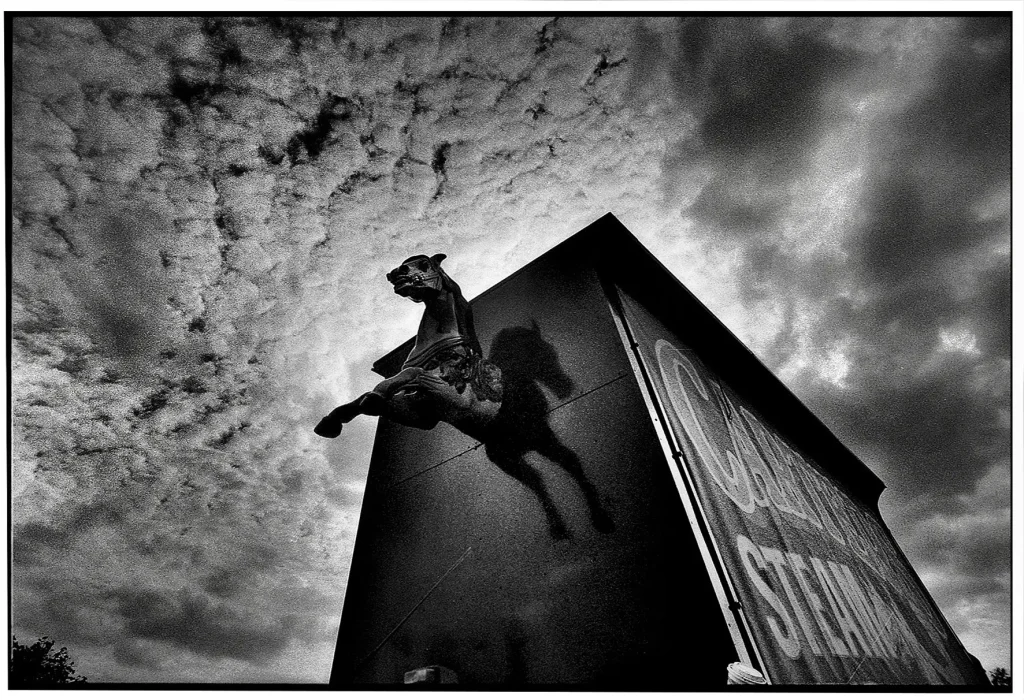
In the meantime, I got used to glance at the limits of the frame while looking through the viewfinder to check if everything fits in. Previously, because we have a point of fixation on the field of view and a vast peripheral vision area, it was not unusual to let something out of the image.This is a lens with lots of character and it is important to take advantage of it in the right situations. Like I mentioned above, I could find it inappropriate or unflattering to photograph people in a classical way, but of course it depends on how we use it. It also can be an excellent choice when we have in mind, for example, a more dramatic or expressionist portrait.
Paris Métro. The Twenty Millimetres Under the City
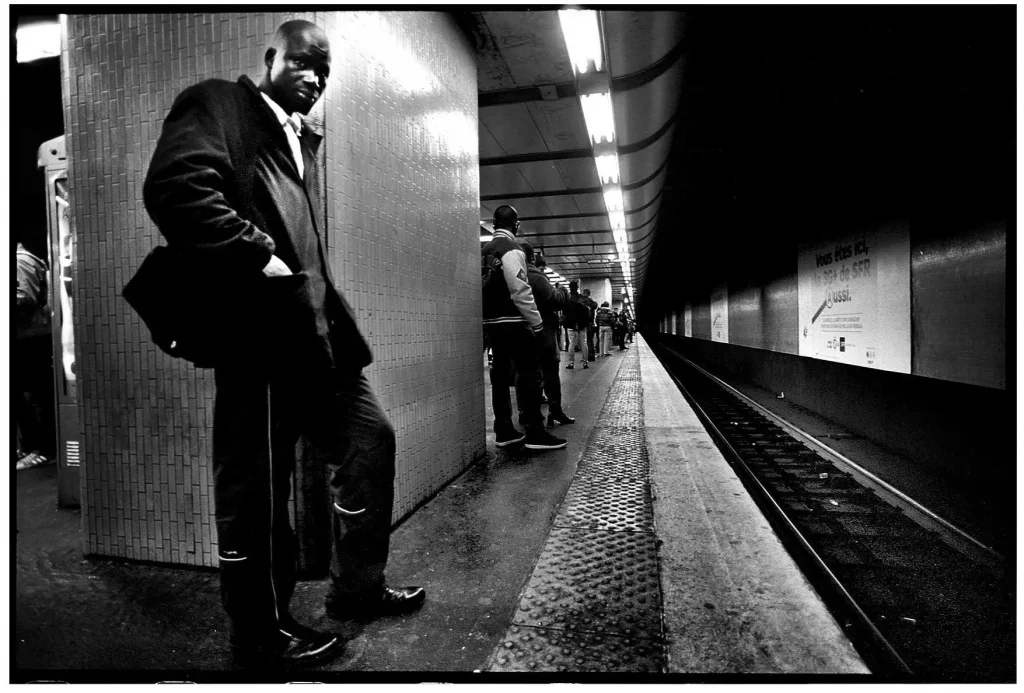
My first go at a photography project consisted in a series of people commuting in the Paris Métro (underground). In my early teens I had become a big enthusiast of the French polar (French crime films), its peculiar, stylized depiction of Paris offered me a romanticised and exciting image of the city. Jean-Pierre Melville’s neo-noir Le Samouraï is one of my favourite films ever, with a breathtaking Métro chase sequence, starring an icy, angelical Alain Delon. I had those scenes, along with the hypnotic François de Roubaix sound score looping through my mind as I walked with my camera across the maze-like Métro corridors.
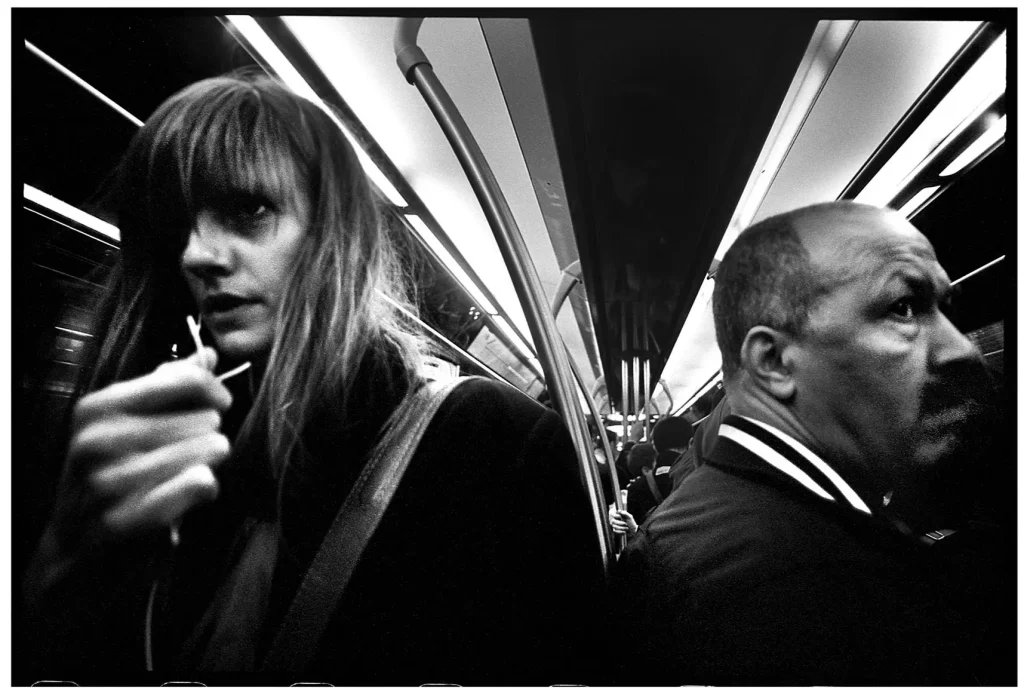
In fact, this happens often, I tend to recall and fantasise about films, books or music while visiting places they relate to, thus entering a reverie mood that reveals to be helpful in my creative process. It is like a blissful layer of fantasy that gently overlaps the stuff surrounding me, shifting my emotional state from the dullness of the day-to-day routine to a more available and creative frame of mind. In this body of work, together with the influential noir imagery, William Klein’s New York photo book was also a reference in the way I have approached and portrayed the commuters.
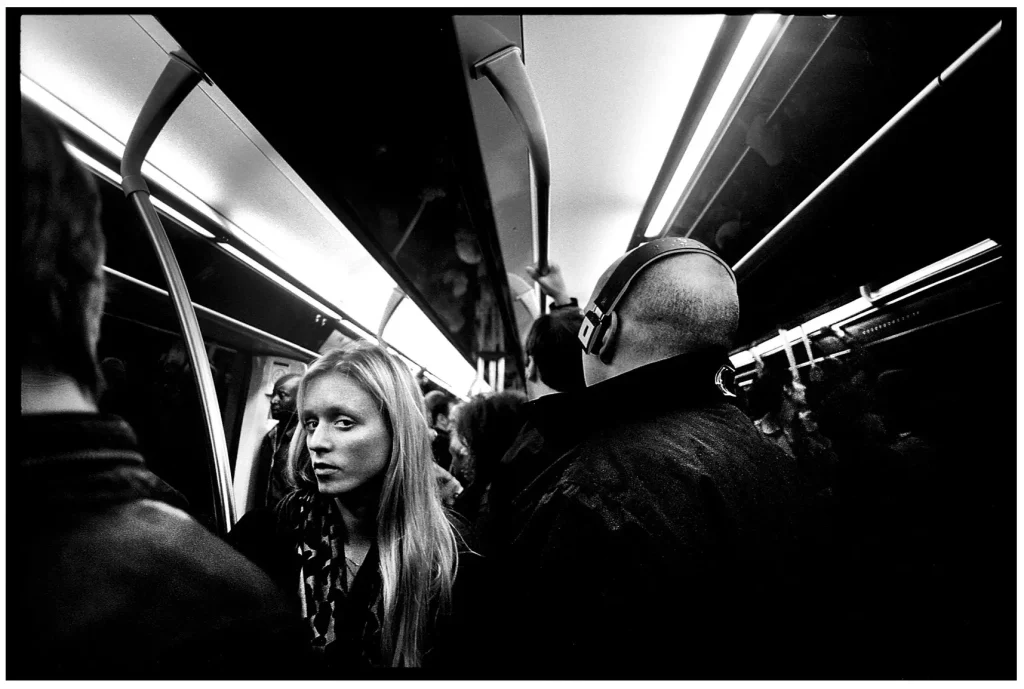
I have used almost exclusively the Nikon F5 and the Nikkor 20mm f/3.5 loaded with Kodak Tri-X. It proved to be a brilliant combo for such an environment. I know that the Nikon F5 is not the most discreet camera out there, but it is fast with a very reliable light meter, and being heavy is actually a plus while shooting slow speeds. With the 20mm, not only I was able to have everybody in the Métro in focus, it also, due to the wide field of view, let me get quite close to the people who most of the time ignored they were being photographed, a stealth feature that I adore in this lens. In this series of photos, the distortion effect is an advantage, as it compresses the space and exaggerates people’s physical features, accentuating the sense of claustrophobia and the loneliness of everyday commuting that I intended to depict.
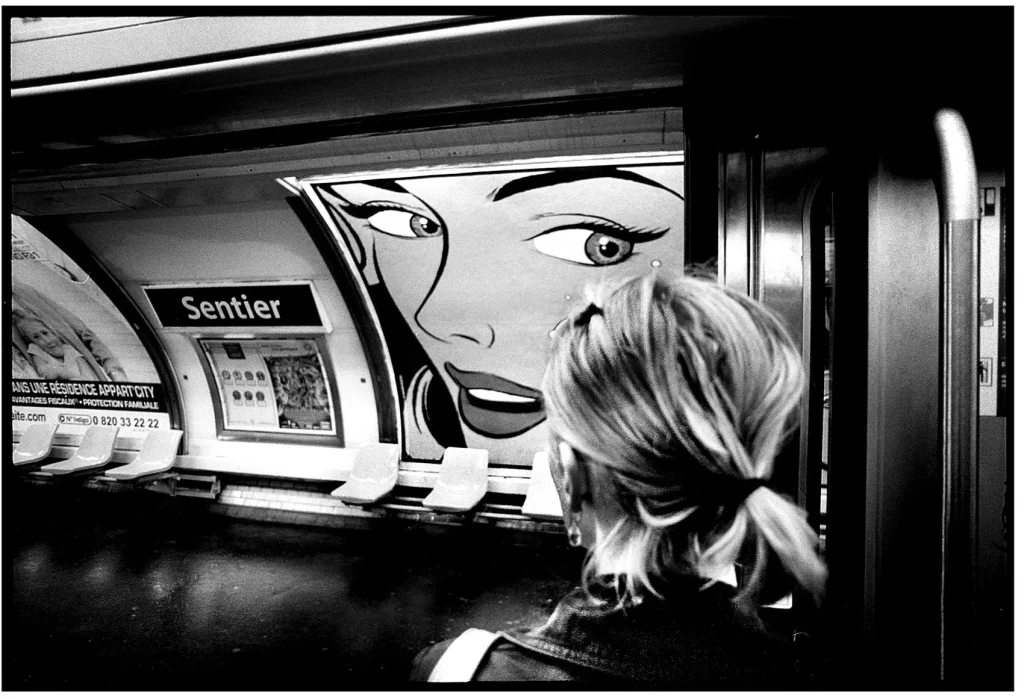
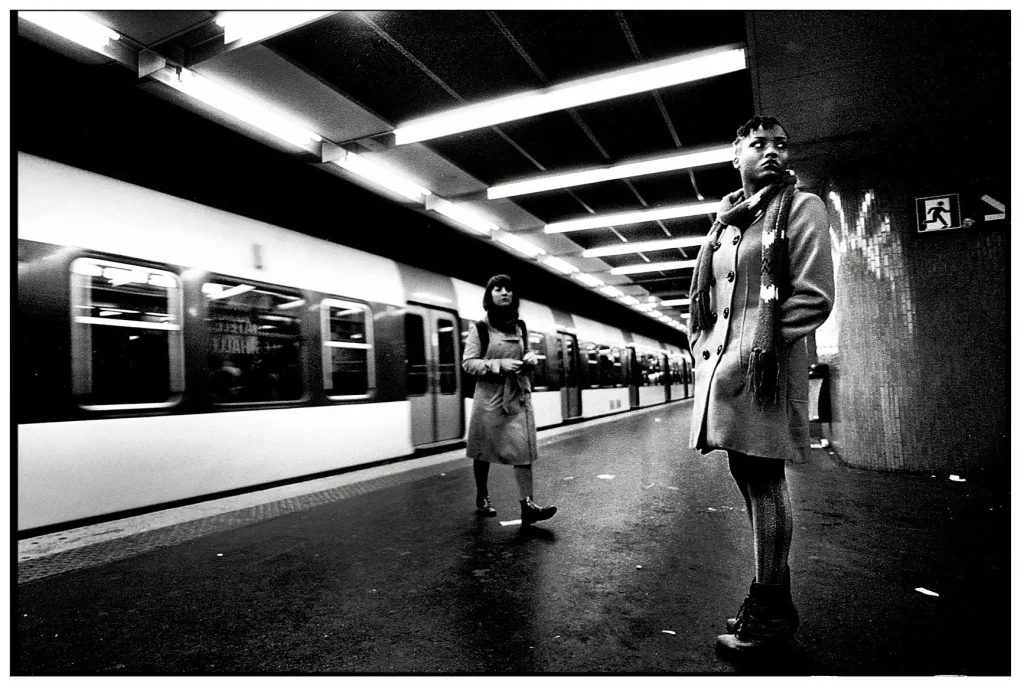
Although I have captured several images, I felt that I would need even more, and having lost some interest in it, the project was left unfinished.
Farewell Postcards
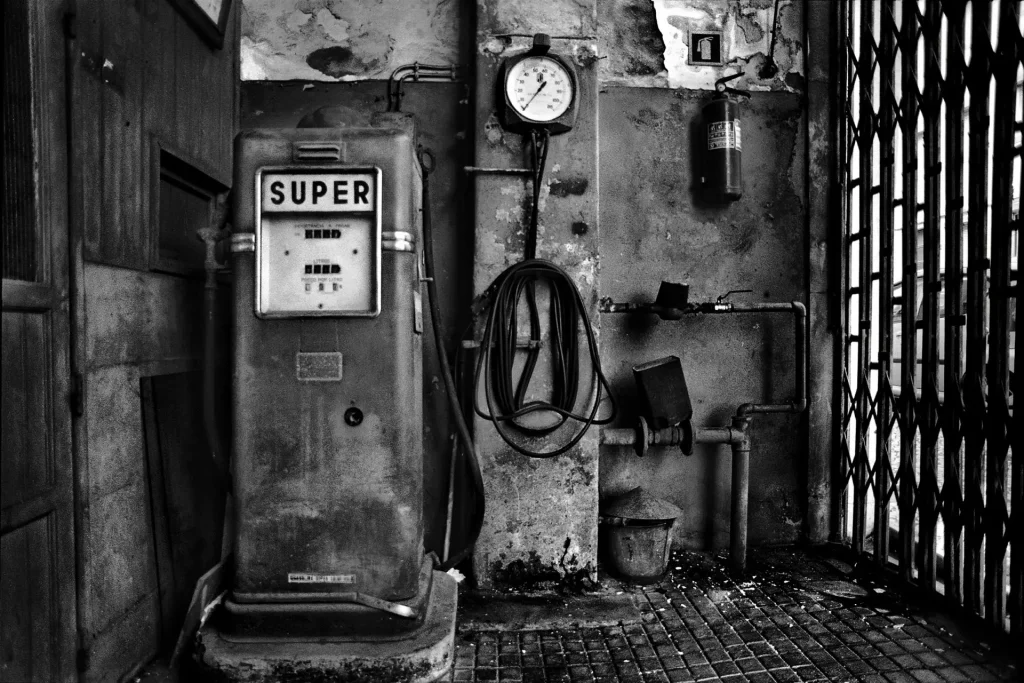
In 2016 my photo book Cidade Sombra (Shadow City) was published, the result of two years drifting and photographing in the streets and backstreets of Lisbon. Here, I somehow distanced myself from the classic street photography approach on people’s daily journeys and their graphic interaction with the urban environment, or from the Cartier-Bressonian ‘decisive moment’ concept. I instead favoured a raw, unpolished look at undisclosed parts of the city, seeking its disregarded details.
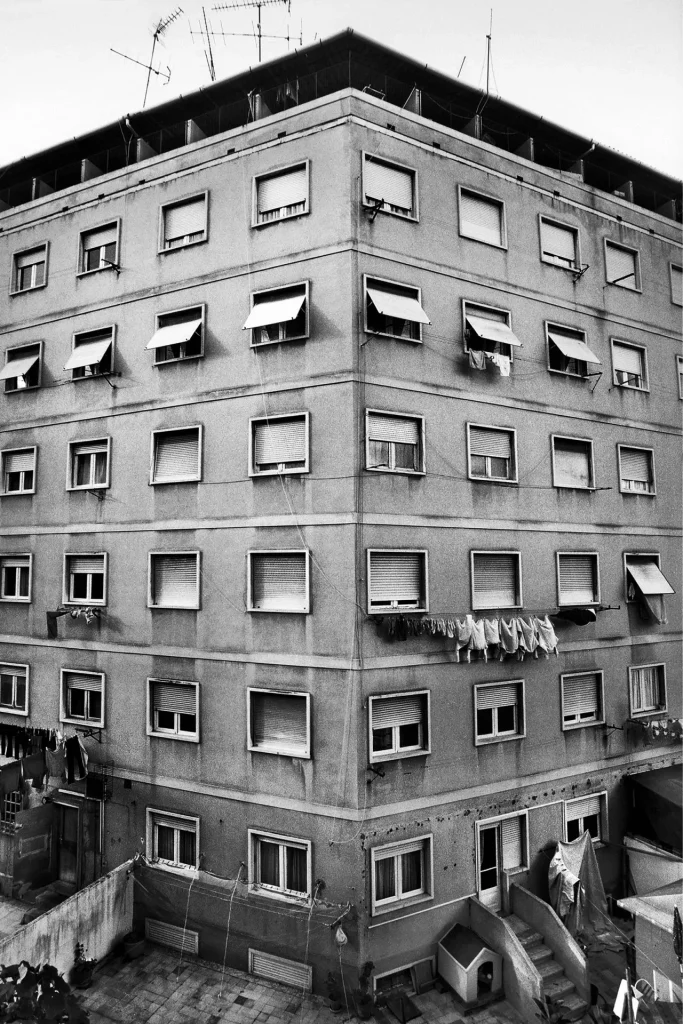
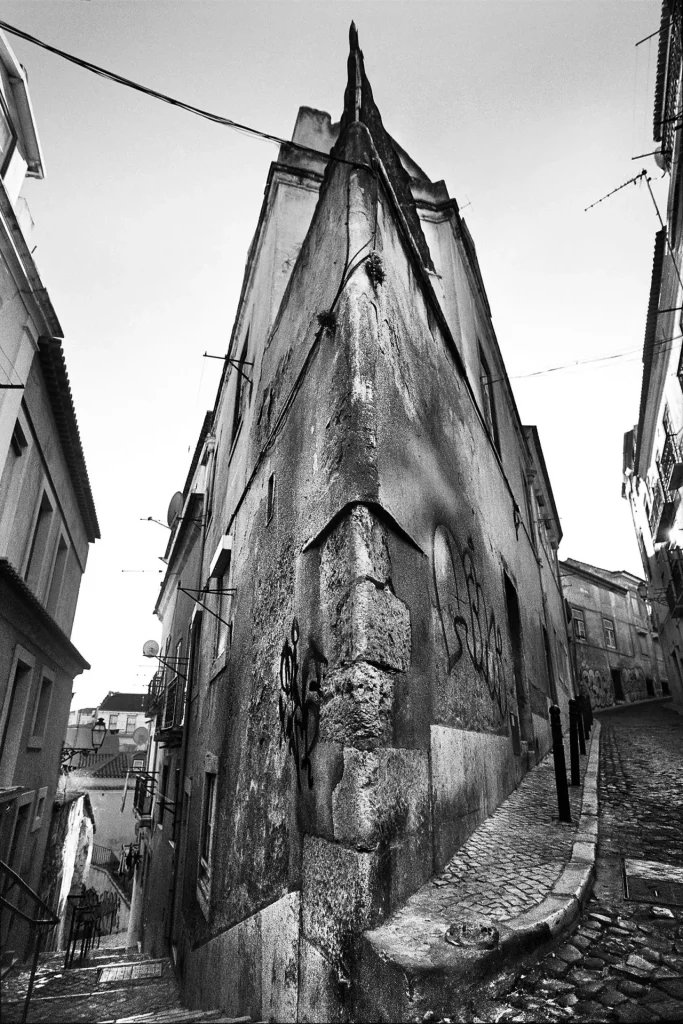
Mostly, I used the F5 and a new, more compact camera, the flawless Nikon FM2n, and once again, the Nikkor 20mm f/3.5 proved to be a highly dependable partner. I explored it broadly on deserted streets and desolate areas. As this lens keeps basically everything in focus and it is hard to highlight just a particular subject, I started to question the way I usually framed and looked at things. In one particular photo, for example, I realised that placing the camera at ground level, allowed me to have a detailed area with all the vegetation, pebbles and textures in the foreground, and simultaneously, a second plan with buildings perfectly defined in the distance. I believe this could grant an interesting and more subjective reading of the image, as we have different areas to look over and explore. Of course, like I previously pointed out, we should be careful to avoid framing anything irrelevant.
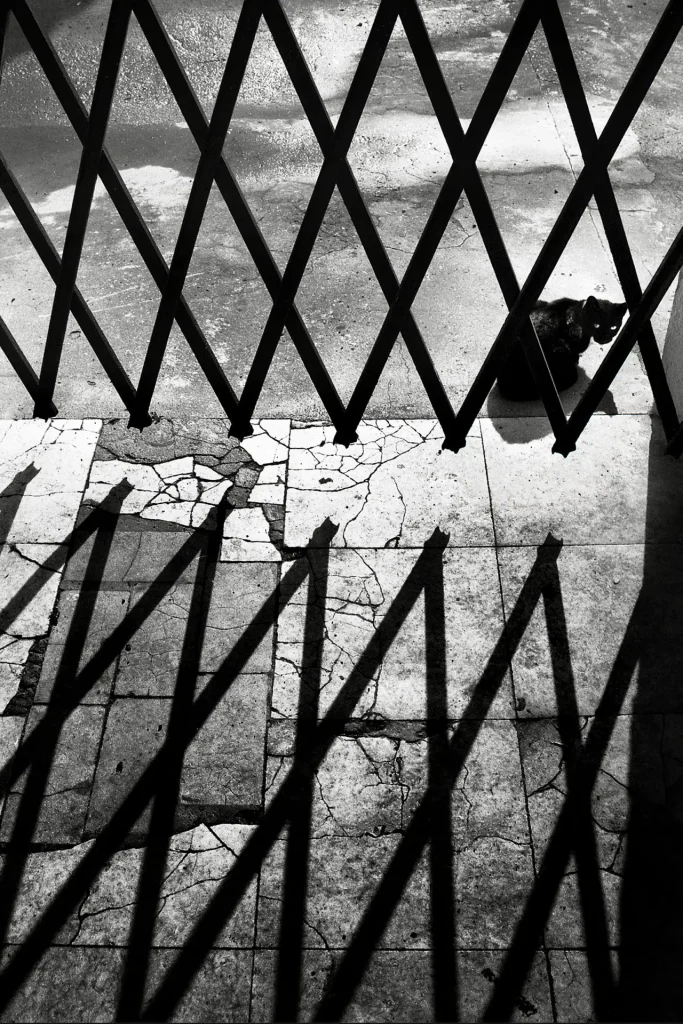
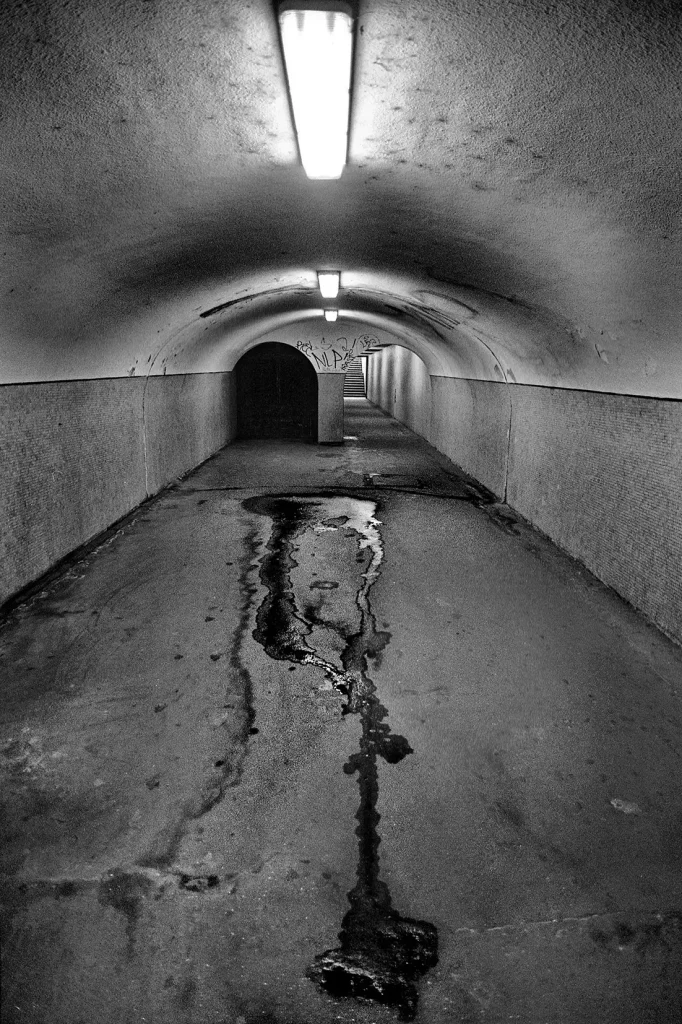
I had moved to London in 2015. At home, while editing and finishing the book, it felt like I was looking at farewell postcards from my former city. It increased the sense of melancholia that I already perceived the two years I walked the streets of Lisbon. Looking back at those 116 photos, I mostly see the remains of a city that faded in the recent years. A swift and relentless process of gentrification took place, evicting tenants from buildings so they now can finally display some beautiful facades.
Through The Nikkor Glass and What I Found There
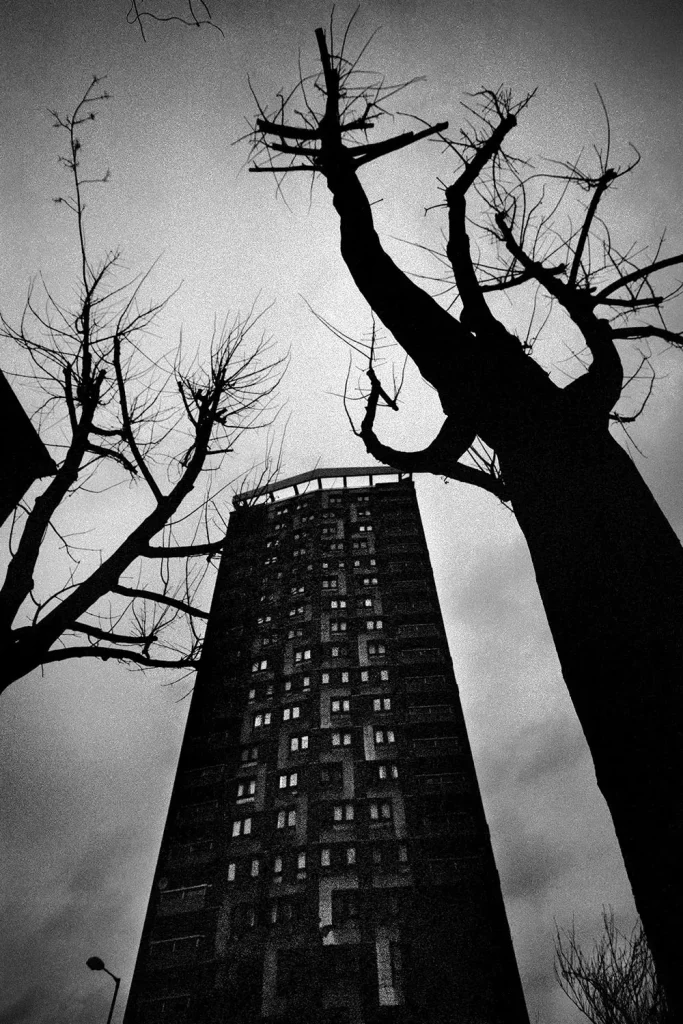
Once I arrived to live in the United Kingdom, I wanted to put in practice a demanding project I had in mind: to photograph each of London’s 33 boroughs, covering their cultural attributes, communities, green areas, architecture and so on. However, after some weeks of long walks, I gave up, as I realised that the city’s magnitude would turn the project into an unattainable goal. Also, the more I came familiar with London, the more certain I became that it didn’t make sense to set any sort of boundaries, isolating the boroughs was not that interesting to me anymore. By then, I had taken a generous amount of photos, and as I looked more attentively, I began to recognise and establish a unity between them that differed from my initial concept.
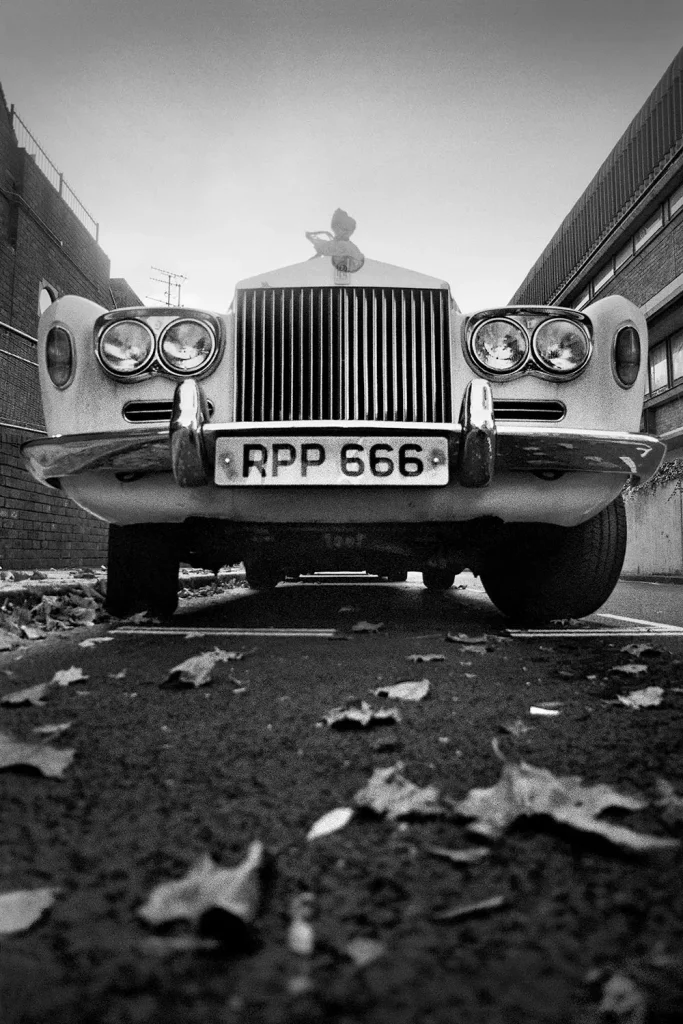
Like in Cidade Sombra, they showed a different, less known side of a city, but here, an eerie, haunting atmosphere could be observed on most of the images. An imposing building embraced by leafless, winding trees with branches like claws; a threatening Rolls Royce with a number plate from Hell; an oversized woman’s head trapped on the Tube eyeballing the viewer through closed doors. Here and there cinematic references echoed: the Gothic aesthetic of British Hammer horror films that haunted my childhood; Expressionist distorted angles as in Robert Wiene or Karlheinz Martin; the symmetric One-Point perspectives used in many Stanley Kubrick films. In all these, the 20mm served me awesomely. The photos were all shot vertically (portrait mode) using the FM2n and the F5.
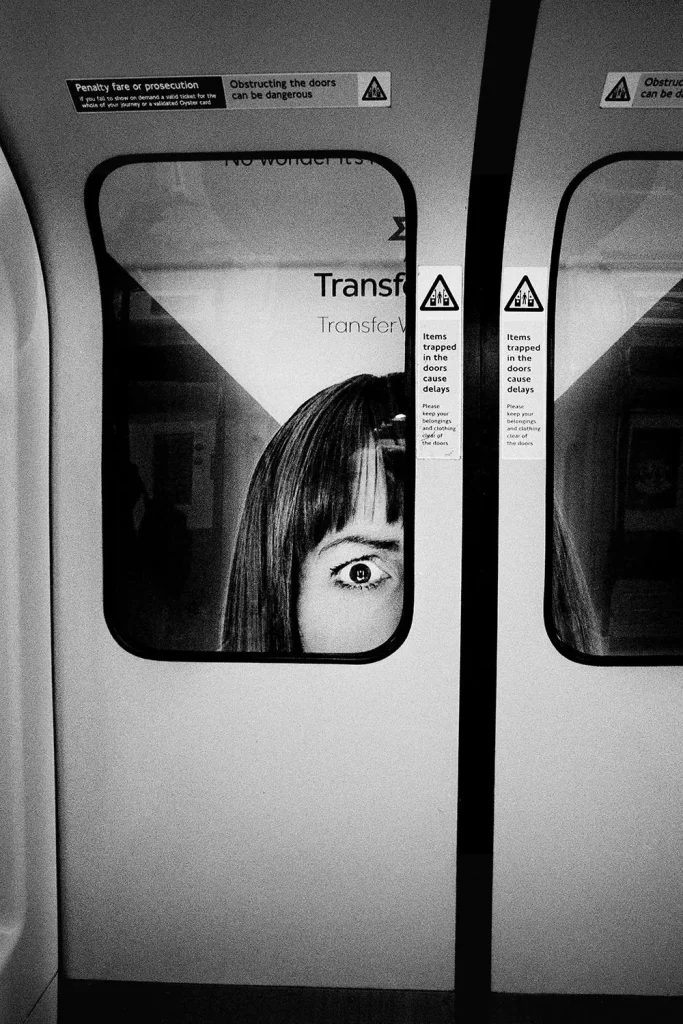
I was thrilled to have captured, unintentionally, a more personal vision of London than the one I would get if I had went on with the initial project, which was, in a way, a more predictable concept.
If in my previous Lisbon project the photos reminded me of postcards from the city I was leaving, in this one, they looked more like peculiar cards from a Tarot deck. The images seemed to radiate a frightening, archetypal symbolism. I interpreted that as an initiatic journey, and the incidence in the bizarre, along with the fixation on blocked accesses may express, unconsciously, my fears or obstacles at my attempt for integration in a new country. I named the project, which later became an exhibition, Release the White Rabbit, a Carrollian title evoking the search for knowledge, a look beyond the obvious and a step into the subconscious.
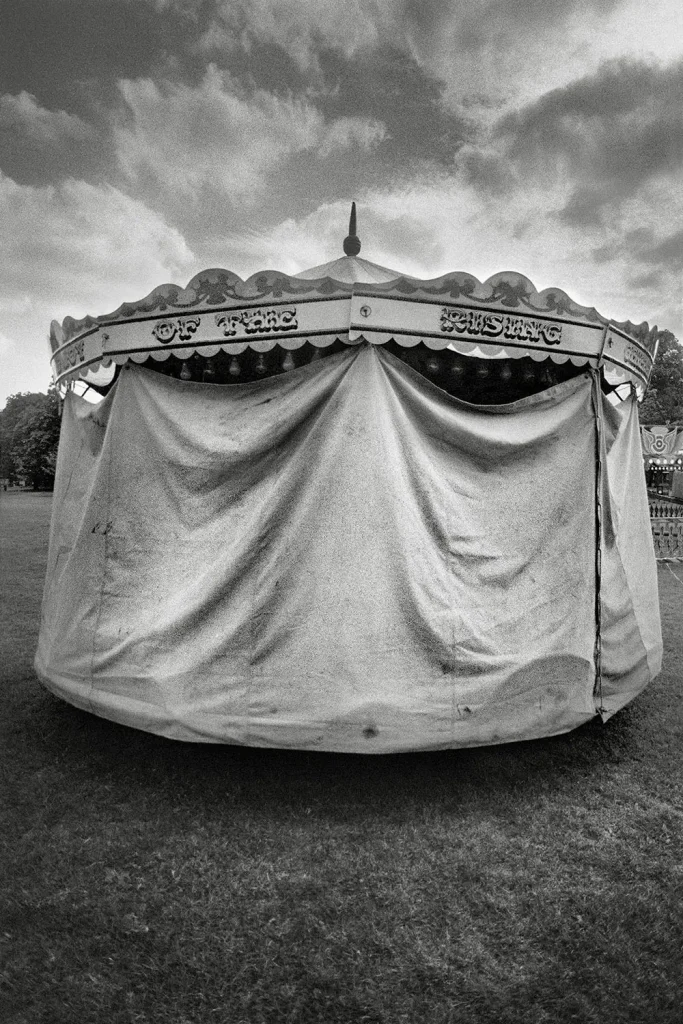
A Short review
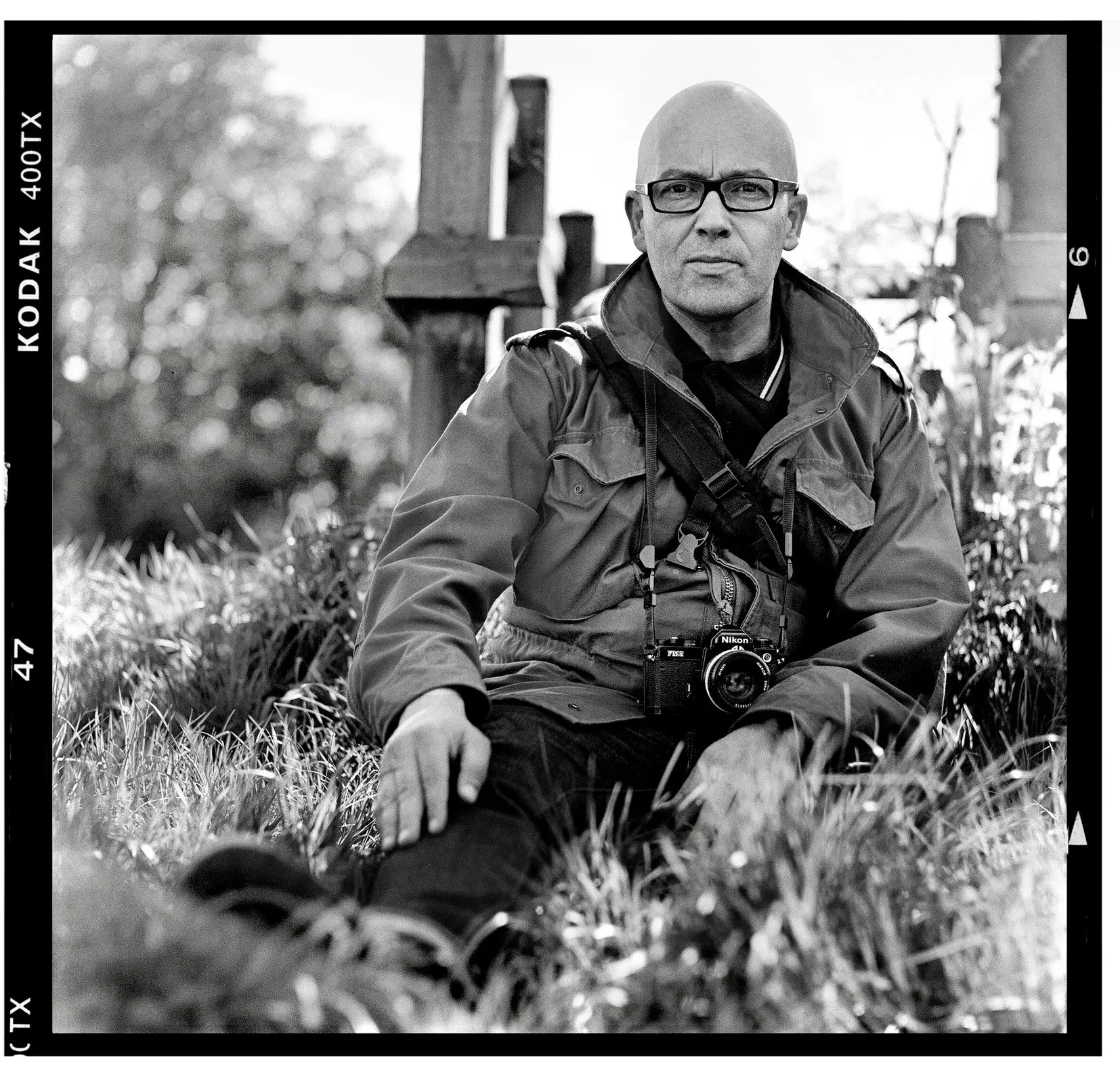
Recently, I started to walk around and work with other cameras apart from the Nikons, like the sturdy Mamiya C33, the legendary Leica M6, or my only digital camera, the lovely Fuji X-T3. Although I love all of them for different reasons and purposes, I could say for sure that the Nikkor 20mm f/3.5, mounted on any of my Nikon bodies, was the tool that better helped me to define my photography style.
The most recognisable of my photos were shot with the Nikkor 20mm f/3.5. I have used it exhaustively, but even so, I don’t think I could write a technically accurate review about it. I don’t have the skills to test lenses professionally. Actually, I really never cared much about many of the technical details that I have read in countless online reviews, usually supported by fancy graphics. I understand that for most people it is certainly helpful information, but I always had a more emotional approach on these matters.
I could, for example, make use of a lens that is praised for being sharp in all corners and at all apertures, and nevertheless, loathe the image it produces. I tend to value more the optical character a lens can provide, something that is technically unaccountable. Anyhow, here is my opinion in form of a short, user review:
The Nikkor 20mm f/3.5 is a truly remarkable lens, capable of rendering beautiful images with a tridimensional feel and very good contrast; it is very sharp, although it could be soft in the corners, depending on the aperture, nothing critical or even visible on the most part of my grainy and contrasted photos; it presents some barrel distortion, but again, it is not an issue on my work; its excellent coating allowed me to took shots in adverse light conditions, like several times against the sun, with a stunning resistance to flare.
It is a manual lens but with this focal length we have everything in focus most of the time; actually, even with AF lenses in my F5, I tend to use them usually in manual mode. The built quality is outstanding, all in metal, and both focus and diaphragm ring work flawlessly. I love this lens. It became truly relevant in my work.
In this sorrowful period of uncertainty and restrictions, I think even more eagerly in future projects, and I often tend to pre-visualise them in my mind through the distorted perspective of this awesome Nikkor 20mm f/3.5.
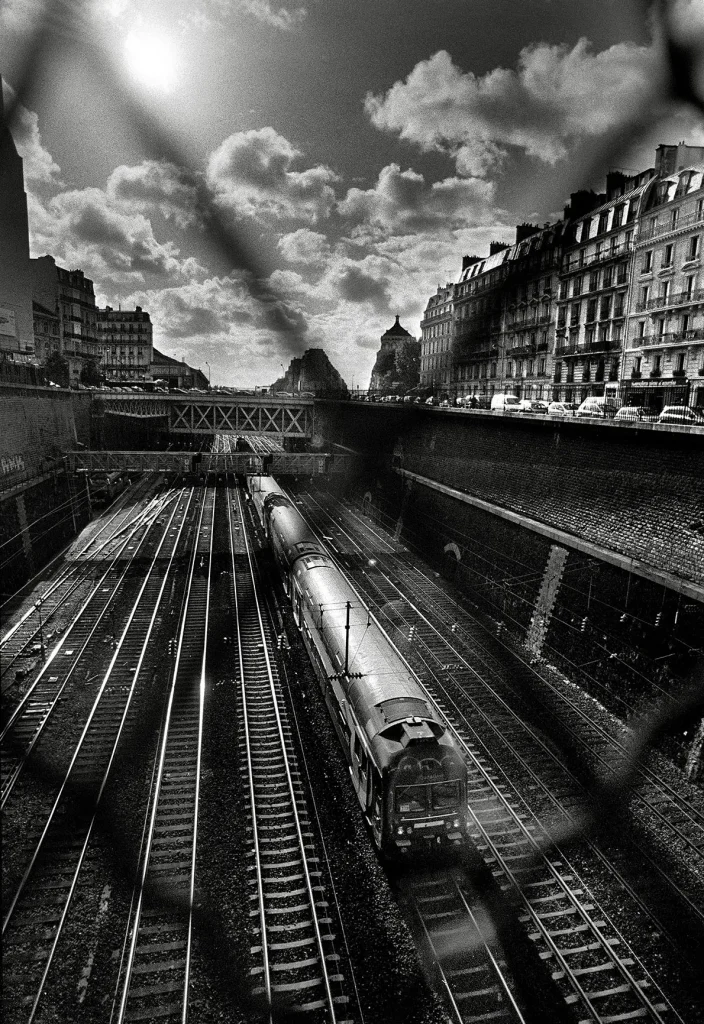
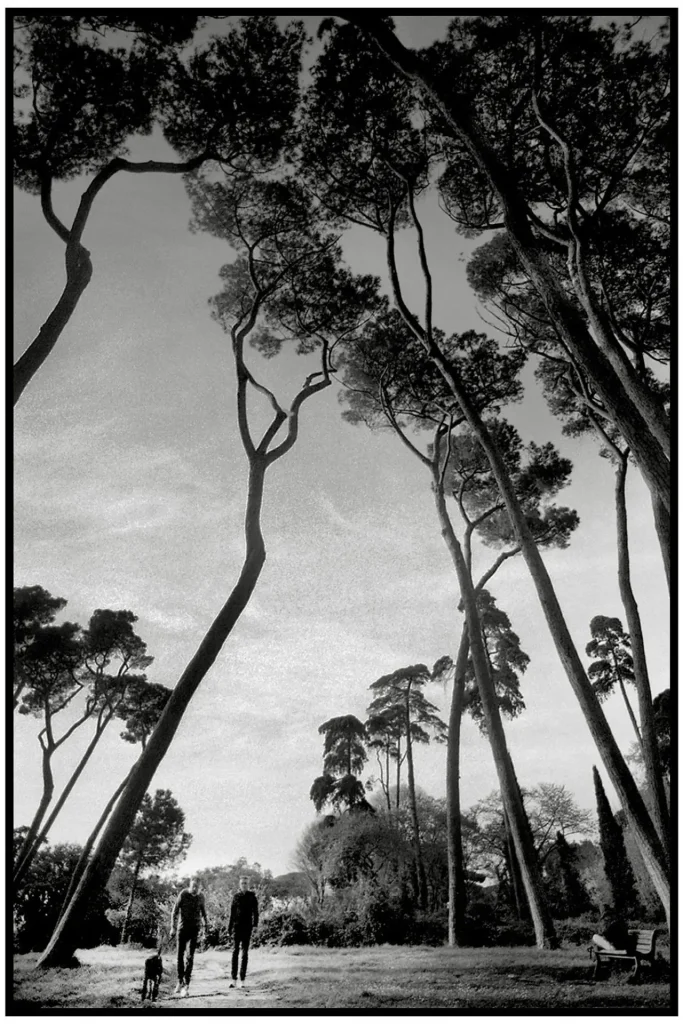
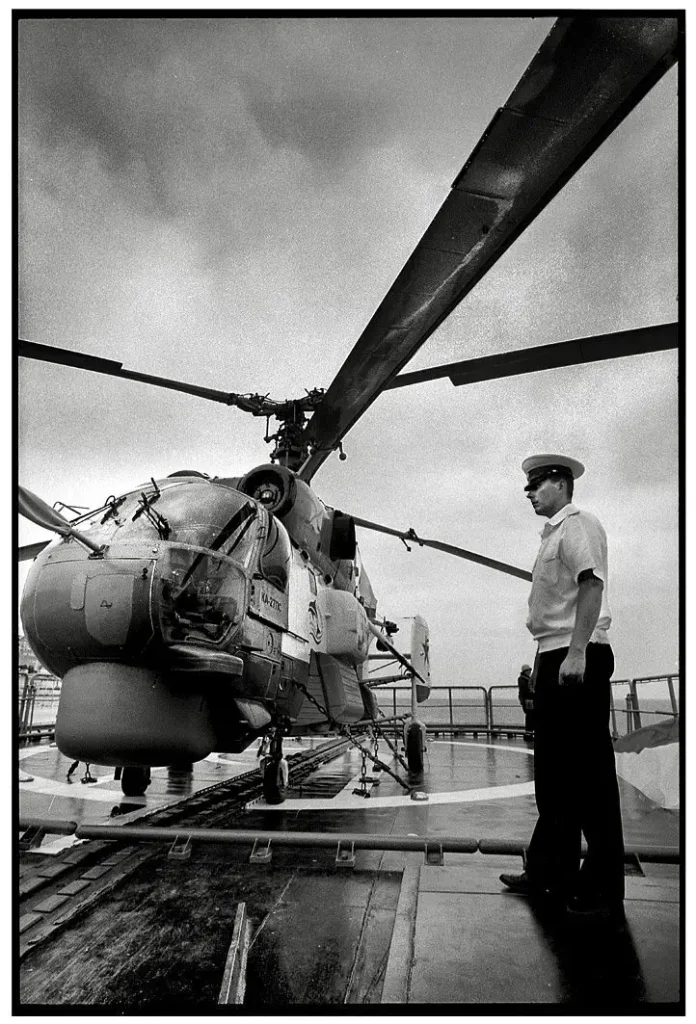
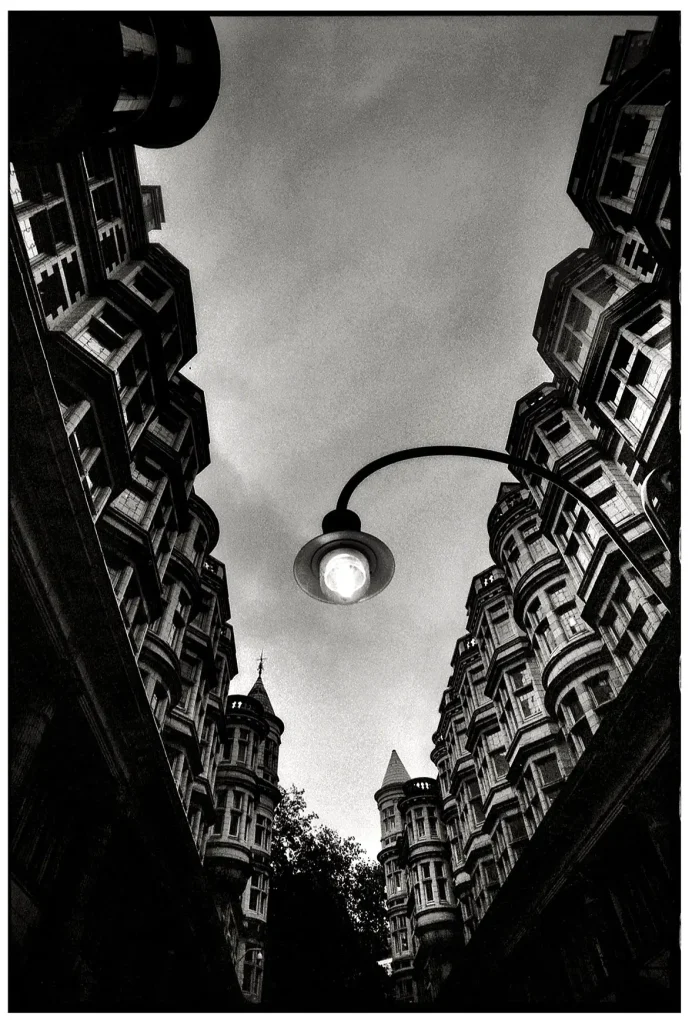
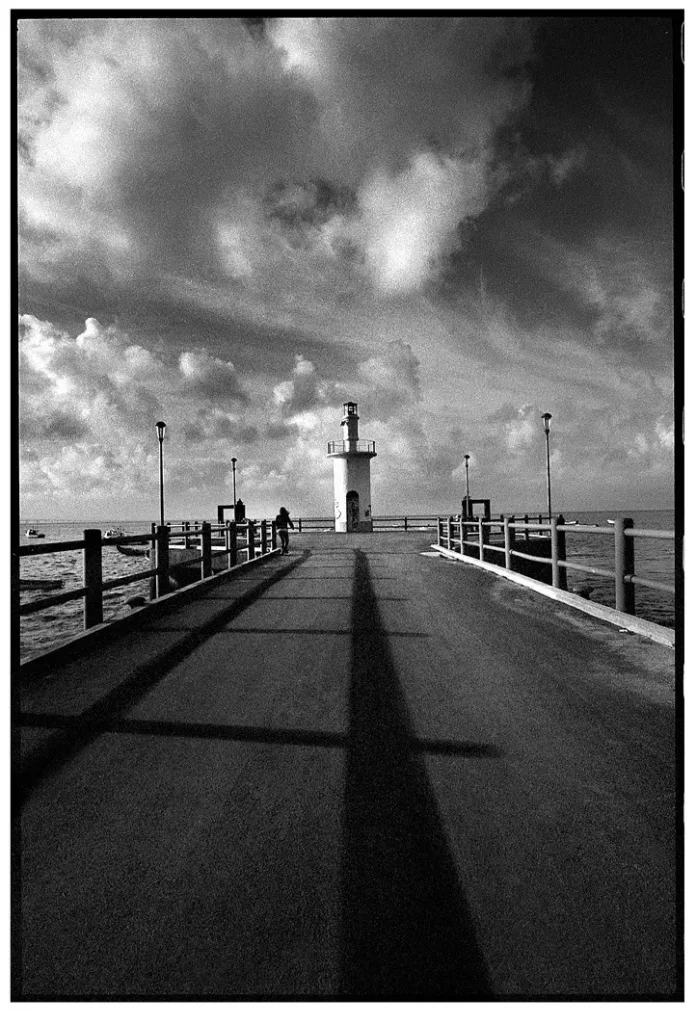
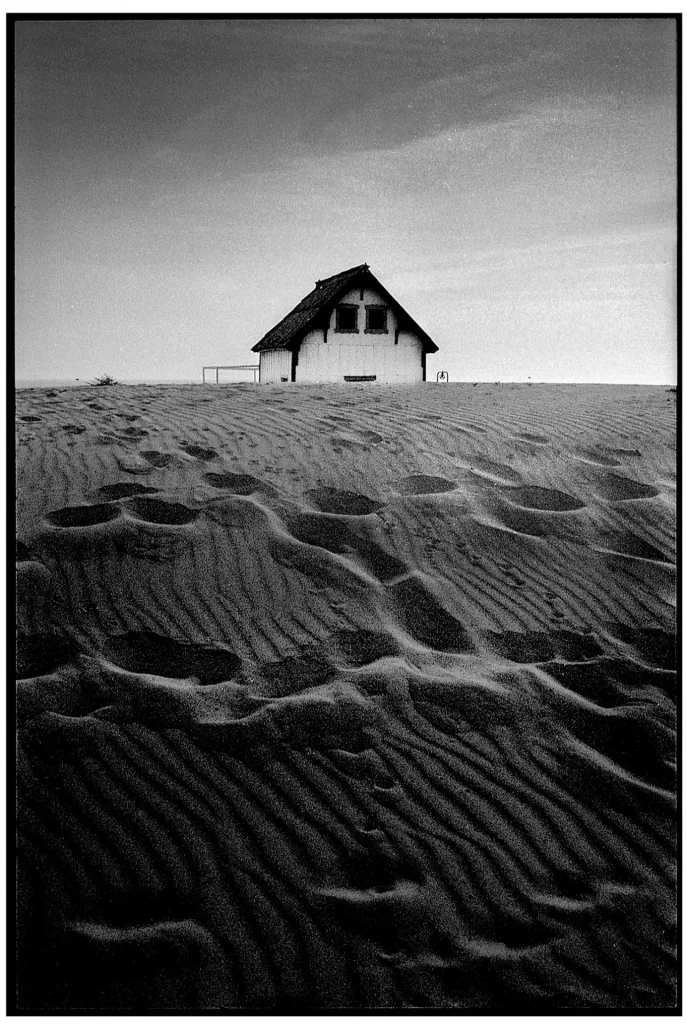
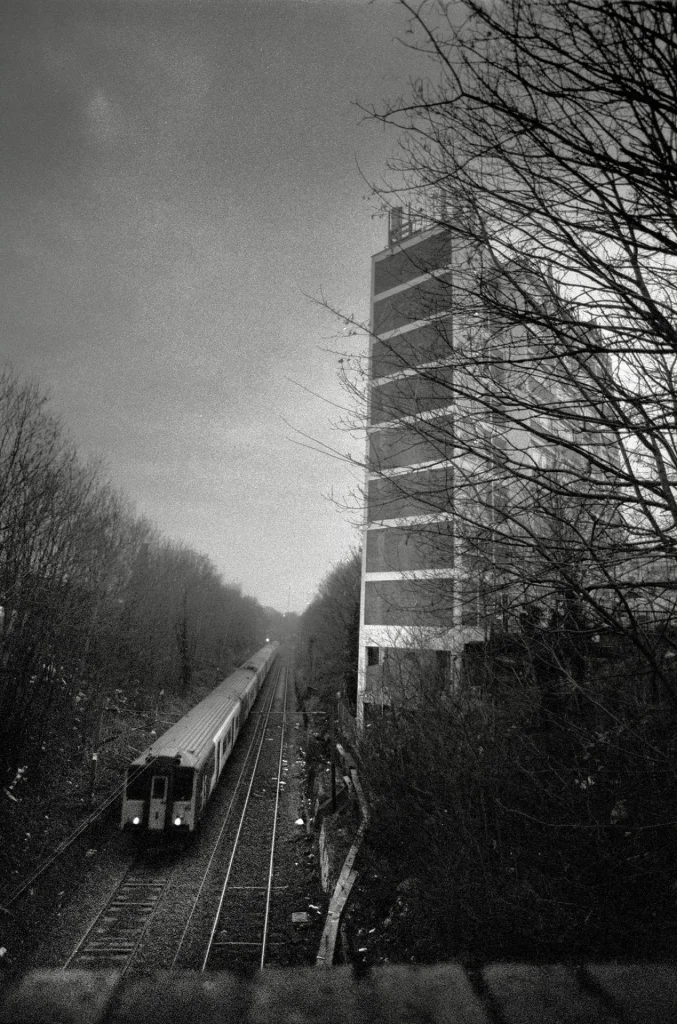
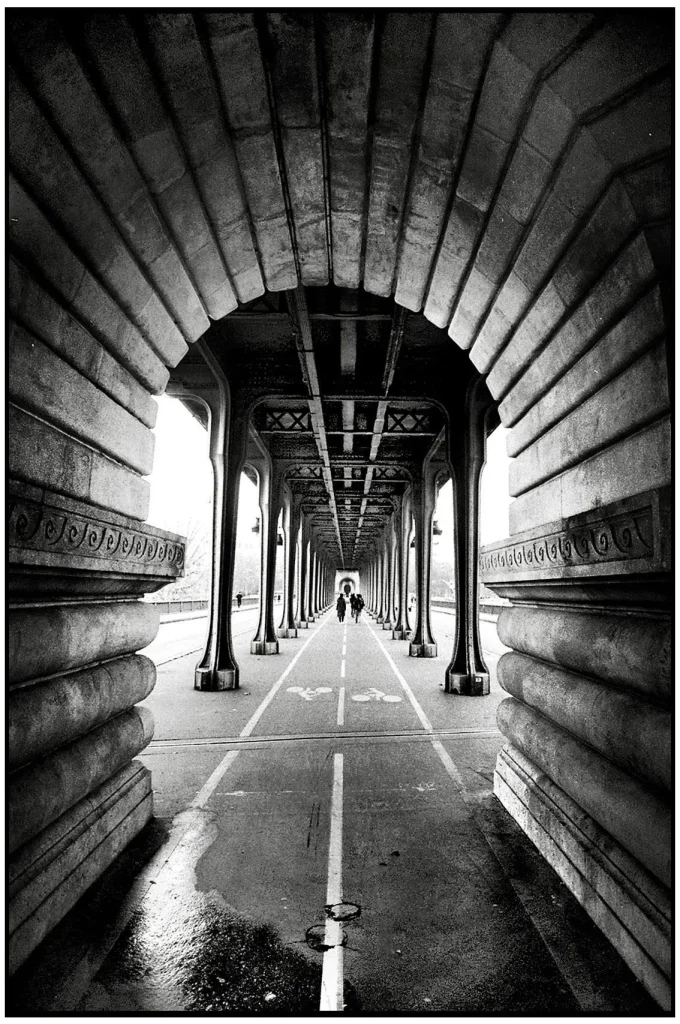
You can follow my work here:
My Website: https://fernando-martins.com
My Instagram account: fernandomartinsphotography
My Facebook Photography page: FernandoMartinsPhotography
My Photo book Cidade Sombra:
https://www.wook.pt/livro/cidade-sombra-fernando-martins/18303868
https://photobookcafe.co.uk/items/show/187
https://www.abysmo.pt/livros/69-cidade-sombra
Share this post:
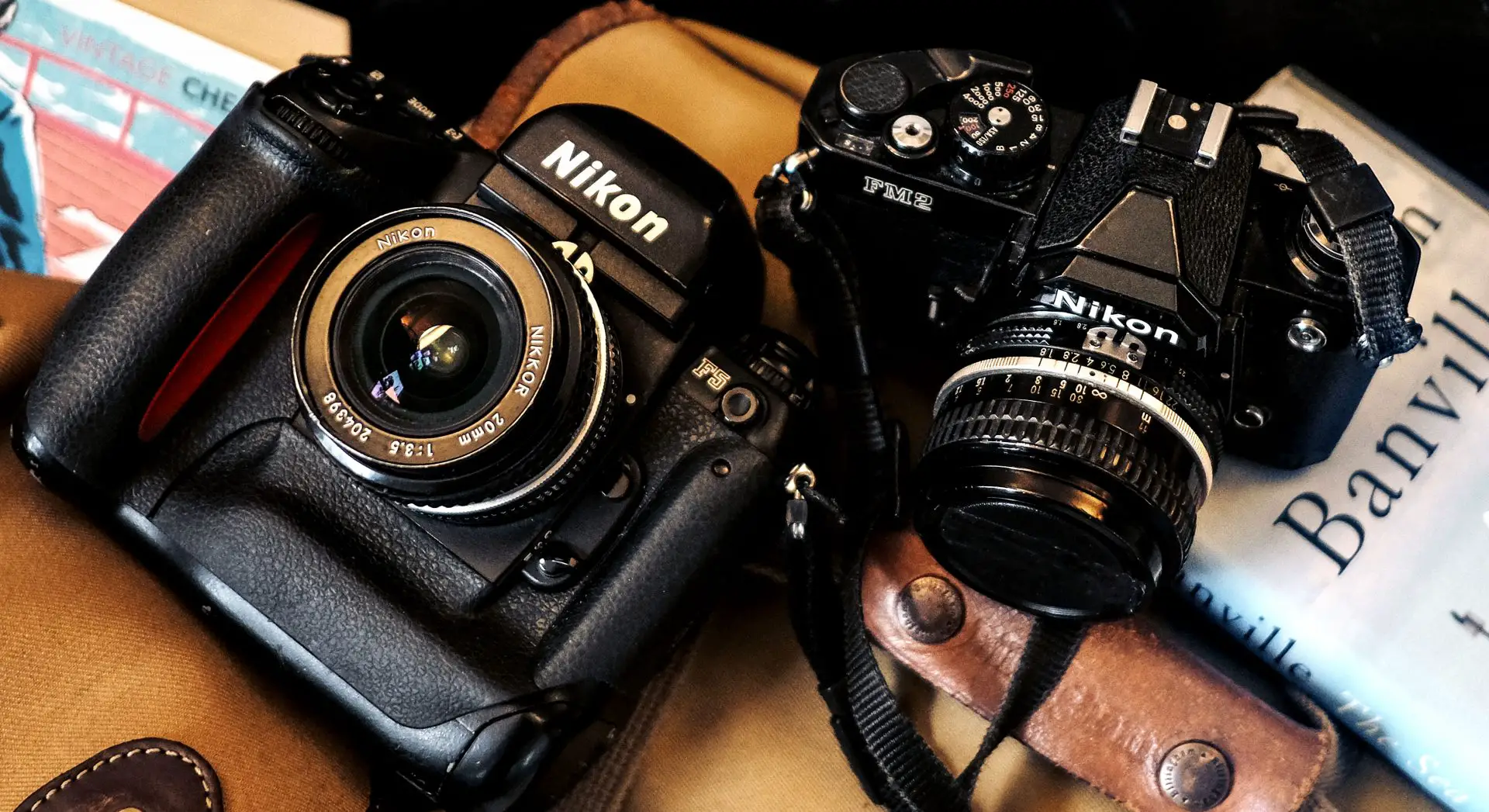








Comments
brant on Nikkor 20mm f/3.5 – Taming The Ultra-Wide – By Fernando Martins
Comment posted: 24/11/2020
Comment posted: 24/11/2020
Terry B on Nikkor 20mm f/3.5 – Taming The Ultra-Wide – By Fernando Martins
Comment posted: 24/11/2020
Comment posted: 24/11/2020
Comment posted: 24/11/2020
Comment posted: 24/11/2020
Bob Janes on Nikkor 20mm f/3.5 – Taming The Ultra-Wide – By Fernando Martins
Comment posted: 24/11/2020
Comment posted: 24/11/2020
Comment posted: 24/11/2020
Comment posted: 24/11/2020
avid1 on Nikkor 20mm f/3.5 – Taming The Ultra-Wide – By Fernando Martins
Comment posted: 24/11/2020
Comment posted: 24/11/2020
Robert Williams on Nikkor 20mm f/3.5 – Taming The Ultra-Wide – By Fernando Martins
Comment posted: 24/11/2020
Gorgeous images, all of them.
Thank you for the article and sharing!
Robert
Comment posted: 24/11/2020
Comment posted: 24/11/2020
Comment posted: 24/11/2020
Daniel Castelli on Nikkor 20mm f/3.5 – Taming The Ultra-Wide – By Fernando Martins
Comment posted: 24/11/2020
You've produced a masterful set of images. I like all of them, but the single image I like the best is the bird's eye view of the Lisbon street scene; I love the Paris Metro series.
I also enjoyed your narrative of working with the lens.
May you stay healthy and keep your family & friends out of (covid-19) trouble.
Comment posted: 24/11/2020
Isaac on Nikkor 20mm f/3.5 – Taming The Ultra-Wide – By Fernando Martins
Comment posted: 24/11/2020
Comment posted: 24/11/2020
Hagen on Nikkor 20mm f/3.5 – Taming The Ultra-Wide – By Fernando Martins
Comment posted: 24/11/2020
I use the 20mm a bit on my digital Sony A7. One thing I have noticed is that the 20mm has quite a bit of focus shift.
The 20mm is the only lens that I can not focus at f3.5 and then close down to f8.
Did you notice that? Do you always focus at F8 ?
Comment posted: 24/11/2020
Aivaras on Nikkor 20mm f/3.5 – Taming The Ultra-Wide – By Fernando Martins
Comment posted: 24/11/2020
Comment posted: 24/11/2020
Jacob M Firsel on Nikkor 20mm f/3.5 – Taming The Ultra-Wide – By Fernando Martins
Comment posted: 24/11/2020
Well Done.
Your work is worthy of a book, I think.
Comment posted: 24/11/2020
Chris Timotheou on Nikkor 20mm f/3.5 – Taming The Ultra-Wide – By Fernando Martins
Comment posted: 24/11/2020
Comment posted: 24/11/2020
Matt Sandiford on Nikkor 20mm f/3.5 – Taming The Ultra-Wide – By Fernando Martins
Comment posted: 24/11/2020
Comment posted: 24/11/2020
Rock on Nikkor 20mm f/3.5 – Taming The Ultra-Wide – By Fernando Martins
Comment posted: 24/11/2020
Comment posted: 24/11/2020
Alex Vye on Nikkor 20mm f/3.5 – Taming The Ultra-Wide – By Fernando Martins
Comment posted: 24/11/2020
Comment posted: 24/11/2020
Ben Garcia on Nikkor 20mm f/3.5 – Taming The Ultra-Wide – By Fernando Martins
Comment posted: 24/11/2020
Comment posted: 24/11/2020
Des McSweeney on Nikkor 20mm f/3.5 – Taming The Ultra-Wide – By Fernando Martins
Comment posted: 24/11/2020
Comment posted: 24/11/2020
Gil Aegerter on Nikkor 20mm f/3.5 – Taming The Ultra-Wide – By Fernando Martins
Comment posted: 24/11/2020
Comment posted: 24/11/2020
Graham Line on Nikkor 20mm f/3.5 – Taming The Ultra-Wide – By Fernando Martins
Comment posted: 24/11/2020
Comment posted: 24/11/2020
Jamie W on Nikkor 20mm f/3.5 – Taming The Ultra-Wide – By Fernando Martins
Comment posted: 24/11/2020
Comment posted: 24/11/2020
Walter Levy on Nikkor 20mm f/3.5 – Taming The Ultra-Wide – By Fernando Martins
Comment posted: 25/11/2020
Comment posted: 25/11/2020
davesurrey on Nikkor 20mm f/3.5 – Taming The Ultra-Wide – By Fernando Martins
Comment posted: 25/11/2020
Uma fantástica combinação de palavras e imagens. One of the best articles I’ve ever read on here.
I lived and worked in Lisbon some years ago and count it as my second home so many of your shots resonated with me. I’m also a lover of wide angle. If it’s not worth working at it’s not worth doing.
Dave
Comment posted: 25/11/2020
Callum on Nikkor 20mm f/3.5 – Taming The Ultra-Wide – By Fernando Martins
Comment posted: 25/11/2020
Comment posted: 25/11/2020
rick on Nikkor 20mm f/3.5 – Taming The Ultra-Wide – By Fernando Martins
Comment posted: 25/11/2020
Comment posted: 25/11/2020
Bill W. on Nikkor 20mm f/3.5 – Taming The Ultra-Wide – By Fernando Martins
Comment posted: 25/11/2020
Comment posted: 25/11/2020
Louis Sousa on Nikkor 20mm f/3.5 – Taming The Ultra-Wide – By Fernando Martins
Comment posted: 26/11/2020
Comment posted: 26/11/2020
Greg L on Nikkor 20mm f/3.5 – Taming The Ultra-Wide – By Fernando Martins
Comment posted: 26/11/2020
Comment posted: 26/11/2020
Y.C Yoon on Nikkor 20mm f/3.5 – Taming The Ultra-Wide – By Fernando Martins
Comment posted: 26/11/2020
Comment posted: 26/11/2020
Michael Bresler on Nikkor 20mm f/3.5 – Taming The Ultra-Wide – By Fernando Martins
Comment posted: 26/11/2020
Comment posted: 26/11/2020
Bill Brown on Nikkor 20mm f/3.5 – Taming The Ultra-Wide – By Fernando Martins
Comment posted: 26/11/2020
Comment posted: 26/11/2020
Huss on Nikkor 20mm f/3.5 – Taming The Ultra-Wide – By Fernando Martins
Comment posted: 26/11/2020
Comment posted: 26/11/2020
Ricardo Andrade on Nikkor 20mm f/3.5 – Taming The Ultra-Wide – By Fernando Martins
Comment posted: 27/11/2020
Comment posted: 27/11/2020
Marc Wick on Nikkor 20mm f/3.5 – Taming The Ultra-Wide – By Fernando Martins
Comment posted: 28/11/2020
cheers
Marc
Comment posted: 28/11/2020
Michael Wellman on Nikkor 20mm f/3.5 – Taming The Ultra-Wide – By Fernando Martins
Comment posted: 28/11/2020
Comment posted: 28/11/2020
Robin Hacquard on Nikkor 20mm f/3.5 – Taming The Ultra-Wide – By Fernando Martins
Comment posted: 01/12/2020
Robin
Comment posted: 01/12/2020
Ana Domingues on Nikkor 20mm f/3.5 – Taming The Ultra-Wide – By Fernando Martins
Comment posted: 08/12/2020
ps: qualquer dia dou-te um toque para te pedir conselhos sobre a Fuji.
Comment posted: 08/12/2020
Film Fridays: Nikkor 20mm F3.5 - domesticando lo ultra ancho y definiendo un estilo on Nikkor 20mm f/3.5 – Taming The Ultra-Wide – By Fernando Martins
Comment posted: 11/12/2020
Film Fridays: Nikkor 20mm F3.5 – Relent Less Lynn on Nikkor 20mm f/3.5 – Taming The Ultra-Wide – By Fernando Martins
Comment posted: 11/12/2020
Marc on Nikkor 20mm f/3.5 – Taming The Ultra-Wide – By Fernando Martins
Comment posted: 11/12/2020
Good Light,
Marc
Comment posted: 11/12/2020
Marcio K on Nikkor 20mm f/3.5 – Taming The Ultra-Wide – By Fernando Martins
Comment posted: 11/12/2020
Comment posted: 11/12/2020
Film Fridays: Nikkor 20mm F3.5 – reHviews.com on Nikkor 20mm f/3.5 – Taming The Ultra-Wide – By Fernando Martins
Comment posted: 11/12/2020
Film Fridays: Nikkor 20mm F3.5 | godsownmedia on Nikkor 20mm f/3.5 – Taming The Ultra-Wide – By Fernando Martins
Comment posted: 11/12/2020
Film Fridays: Nikkor 20mm F3.5 – Ash Store.Shop on Nikkor 20mm f/3.5 – Taming The Ultra-Wide – By Fernando Martins
Comment posted: 11/12/2020
Michael Badalamenti on Nikkor 20mm f/3.5 – Taming The Ultra-Wide – By Fernando Martins
Comment posted: 11/12/2020
Comment posted: 11/12/2020
Howard on Nikkor 20mm f/3.5 – Taming The Ultra-Wide – By Fernando Martins
Comment posted: 12/12/2020
Comment posted: 12/12/2020
GAVIN WONG on Nikkor 20mm f/3.5 – Taming The Ultra-Wide – By Fernando Martins
Comment posted: 12/12/2020
Comment posted: 12/12/2020
Franky on Nikkor 20mm f/3.5 – Taming The Ultra-Wide – By Fernando Martins
Comment posted: 12/12/2020
Comment posted: 12/12/2020
Tom on Nikkor 20mm f/3.5 – Taming The Ultra-Wide – By Fernando Martins
Comment posted: 13/12/2020
Comment posted: 13/12/2020
Carl on Nikkor 20mm f/3.5 – Taming The Ultra-Wide – By Fernando Martins
Comment posted: 14/12/2020
Curious what developer you use for tmax 100 and 400 and perhaps HP5 too. Rodinal, or something else.
Thank You, Kindly, Carl
Comment posted: 14/12/2020
Orkhan Abbasov on Nikkor 20mm f/3.5 – Taming The Ultra-Wide – By Fernando Martins
Comment posted: 14/12/2020
I am in love with your photos! I can relate to them, they feel somehow private and filled with passion to photography.
If you live in Lisbon, let's keep in touch.
DM me on Insta if you want to grab a coffee anytime soon:
https://www.instagram.com/oabbazov/?hl=en
Take care!
Comment posted: 14/12/2020
Comment posted: 14/12/2020
Comment posted: 14/12/2020
John Campbell on Nikkor 20mm f/3.5 – Taming The Ultra-Wide – By Fernando Martins
Comment posted: 15/12/2020
Comment posted: 15/12/2020
Peter Christensen on Nikkor 20mm f/3.5 – Taming The Ultra-Wide – By Fernando Martins
Comment posted: 15/12/2020
Like you, I used to climb the Hills of Alfama and Lisbon in the late 90’s carrying my FM2n fitted with either the ais 24 mm f 2.8 or the micro nikkor 105 ais, I sold the gear in 2000 and quit photography, but in 2019 I accidentally stumbled across my contact sheets from those days, and I rebought the excact same Nikon gear, it brought back a lot of good memories, as did your photos, thank you...
Peter
Comment posted: 15/12/2020
Comment posted: 15/12/2020
Comment posted: 15/12/2020
Comment posted: 15/12/2020
Comment posted: 15/12/2020
chrisomac on Nikkor 20mm f/3.5 – Taming The Ultra-Wide – By Fernando Martins
Comment posted: 16/12/2020
Comment posted: 16/12/2020
Gary on Nikkor 20mm f/3.5 – Taming The Ultra-Wide – By Fernando Martins
Comment posted: 18/12/2020
Comment posted: 18/12/2020
Dave Myers on Nikkor 20mm f/3.5 – Taming The Ultra-Wide – By Fernando Martins
Comment posted: 18/12/2020
Comment posted: 18/12/2020
Dave Addison on Nikkor 20mm f/3.5 – Taming The Ultra-Wide – By Fernando Martins
Comment posted: 19/12/2020
Comment posted: 19/12/2020
Gary Schisler on Nikkor 20mm f/3.5 – Taming The Ultra-Wide – By Fernando Martins
Comment posted: 19/12/2020
Very, very nice.
I will be digging out my 20mm for immediate use.
Thanks for the motivation!
Comment posted: 19/12/2020
Charles on Nikkor 20mm f/3.5 – Taming The Ultra-Wide – By Fernando Martins
Comment posted: 31/12/2020
I will not buy a new camera, I will not buy a new camera. I will not buy a new camera. Maybe I'll just get that lens for my x pro-1...
Comment posted: 31/12/2020
Peter on Nikkor 20mm f/3.5 – Taming The Ultra-Wide – By Fernando Martins
Comment posted: 31/12/2020
Comment posted: 31/12/2020
Charles on Nikkor 20mm f/3.5 – Taming The Ultra-Wide – By Fernando Martins
Comment posted: 31/12/2020
Congratulations on such great work !
Happy New Year
Comment posted: 31/12/2020
Photodad on Nikkor 20mm f/3.5 – Taming The Ultra-Wide – By Fernando Martins
Comment posted: 24/03/2023
These photographs really stand out.
Great job.
Comment posted: 24/03/2023